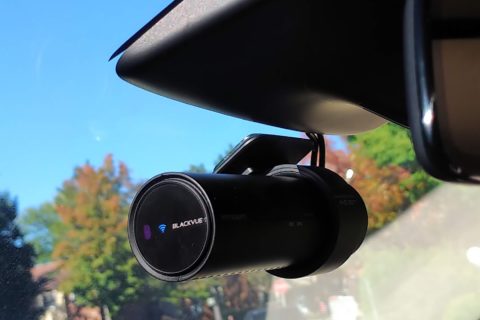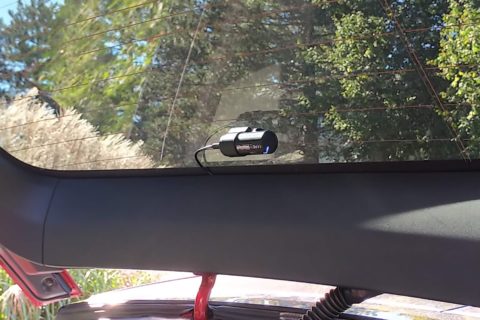Dash Cameras
SERVICE OVERVIEW
These units are not new to the world, but are gaining popularity as their costs come down. Quality is increasing, and YouTube keeps supplying us with hours of crashes and near-misses to keep us entertained. Yes, they can help you to deal with the Police or your insurance company should something unfortunate occur, but there are limits. Before you go shopping for a dash-cam, make note of these 6 important things which will help you purchase a good unit instead of wasting your money.
Frames-Per-Second (FPS), not to be confused with Image Quality
A video is simply a series of still pictures, or frames, played in order at a high speed, and that speed is called FPS. Here in Canada, we have case-law which dictates that any video MUST be recorded at 32 FPS or higher in order to be submitted in court, because any video recorded at a lower rate can be more easily manipulated, altered, or edited. If you are purchasing a camera so you can goof around with friends and share video on YouTube, then a lower frame rate is fine, but if you catch someone on video vandalizing your car, the video image will be rejected as evidence in court if it’s recorded below 32 FPS. This case-law does not exist in the USA or other parts of the world, which is why there are so many cameras available online with terrific reviews, most of which have been left by our American cousins. Check the FPS of the camera you are researching, and make sure it’s sufficient. If FPS isn’t listed on the product’s specification page, there’s a reason why, so walk away and don’t waste your money!
Image Quality, not to be confused with FPS
We all know what 1080p is, but these days 4K is trying to make its way into our world. Remember that 4K video takes up about 3 to 4 times the space on an SD card, so a 128GB card with 4K recordings holds about the same as a 32GB card recorded in 1080. If you choose a camera that only has a 32GB card, you’ll only get a day or two of recording time in 4K. More importantly, think of where you’ll be watching the videos. Not everyone has a 4K screen in their living room, and you probably won’t be watching the 1-minute clip of your incident there, even if you have one. More likely you’ll be showing the video to a Police Officer at the side of the road on your phone, uploading it to YouTube or Facebook, or e-mailing it to your insurance company. Most social media only plays video at 720 to help save bandwidth, so your 4K investment is wasted. Save your money and stick to 1080.
Low-Light (LUX) versus Night-Vision
Cameras are rated for how well they perform in darkness, or near-darkness, with a rating called LUX. The lower the LUX number is, the better they see into darkness. This is important, because many cameras will record things happening on dark roads, in dark parking lots, or through rear windows that have tint on them, so the lower the LUX rating is, the clearer the picture will be in darkness. Most cameras have a LUX rating of 3 to 5, but a good low-light camera will have a rating of 0.2 and will deliver a clear colour image in near darkness. Night-Vision, on the other hand, uses infrared LED’s to emit a small amount of light invisible to the human eye in an attempt to illuminate the image. Night vision usually results in 3D objects such as a human face being very shadowed and difficult to identify, and it isn’t strong enough to illuminate dark areas like the side of a house. As a result, most night-vision cameras revert to 2-colour imaging in darkness – usually green/black, or black+ white. It’s important to know that cheaper cameras use night-vision as they know most people think it’s superior technology, but a low light camera is actually the better investment. If your camera manufacturer isn’t boasting about the near-dark image quality of their product, then it probably isn’t great. Check their websites for pictures and videos taken with their product, or type their model number into YouTube to see recordings made with their cameras.
Dual camera systems
Many inexpensive cameras mount in the front of your car and aim forward, which is good, but remember that 50% of the things that happen around you actually happen behind you. A good camera kit will include TWO cameras – one for the front and one for the rear. If you get rear-ended at a stop light by someone who is texting and driving, the front camera doesn’t serve you well. Likewise, the vast majority of people don’t back into a parking spot at their favourite shopping location because they leave the rear accessible for loading their purchases easily when they return. If someone at the grocery store backs out of a spot and clips your rear bumper, what good is the front camera to you? A good camera kit with 2 cameras (sometimes called 2-channel) doesn’t cost much more than a single camera kit, but is well worth the investment.
NOTE: There are also camera kits available that aim backwards from the front windshield into the passenger cabin of the car, and from time to time you can see these images in car crash videos on YouTube. These cameras are ideal for recording yourself in case of a collision – proving you are wearing your seatbelt, that you aren’t a distracted driver, that you are obeying the rules of the road. They’re also a huge asset for people who use their cars as Uber or Lyft drivers as they can record bad behaviour or sinister actions of clients and passengers. Some kits include a second camera for this purpose instead of a rear facing camera, and some have this third camera built into the front camera unit. Look carefully at the model you are choosing!
Data and Connectivity
All cameras use SD cards to record the video, but if the vehicle is broken into and the camera is stolen, the SD card goes with it. A good camera unit will have WiFi capabilities so it can upload the video being recorded as the car sits in your driveway. WiFi also helps you to connect your phone quickly for video reviews, such as you might do at the side of the road right after a crash, when you’re showing it to Police. Some new cameras also have LTE connectivity, to upload “events” as they happen, much like live-streaming. Without WiFi, you will be constantly removing your SD card from your camera so you can connect it to your computer for video uploads.
A good camera will also use a GPS locator. This will display some vital information that may be relevant in case of an accident. The data logged includes – your location, where you have been (or not been), the speed that you are traveling at (or if you were at a complete stop). This recorded data is usually only seen by you as you review footage on your computer, unless you activate it to display on-screen.
Parking Mode
If your camera is installed using the vehicle power socket (formerly known as the cigarette lighter socket), then it will power down when the vehicle is turned off. To prevent this, parts may be needed to enable Parking Mode. This sometimes requires an additional cable (if it’s not included) or an inexpensive module which allows the unit to be installed “hard wired”, meaning that the camera is always receiving power even if the vehicle is turned off. Parking Mode detects when you turn your ignition off, and at that point the camera “goes to sleep”, so it draws very little power from the vehicle battery. When something happens (an event), the camera wakes up and resumes recording. Wake-up events include impacts, a change in air-pressure in the vehicle (smashed window) and movement within a certain distance of the camera. Parking Mode can be configured to shut the camera down completely after a certain period of time (24/36/48/72 hours) or if the vehicle battery goes low enough that it’s in danger of not being strong enough to start the engine (usually 11.2 volts).
Our Recommendation
For all of these reasons we STRONGLY recommend camera systems made by BlackVue or ThinkWare. It’s your money, but we want to help you to make the right decision so you aren’t wasting it. If you see a product on their site which you believe will suit your needs, send us the model number, and we’ll get you current Canadian pricing and availability.
The average 2-Chanel Dash Cam kit takes about 1 to 1.5 hours to install properly into most vehicles, and we charge $94.50 per hour. Some luxury vehicles (Mercedes, BMW, Tesla) take a few hours longer.
MANUALS
If you have misplaced your manual, look below for a digital copy.
POPULAR QUESTIONS
-
What is a Dash Cam?
-
Why do I need a dash cam?
A “Silent Witness” You Can Depend On.
In the event of an accident, it is often difficult for drivers to recall the crucial details surrounding the accident, due to the shock and stress caused by the event. A DASH CAM plays the critical role of a reliable witness which can protect the driver against unjustified liability. With an in-car dashboard camera, you can rest assured that you have a dependable, silent companion with you at all times on your journey.


